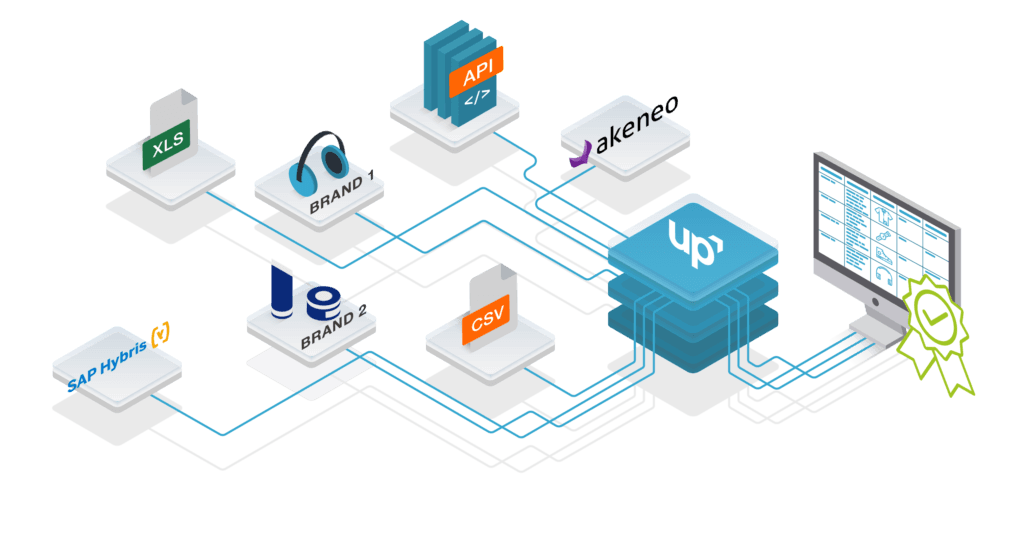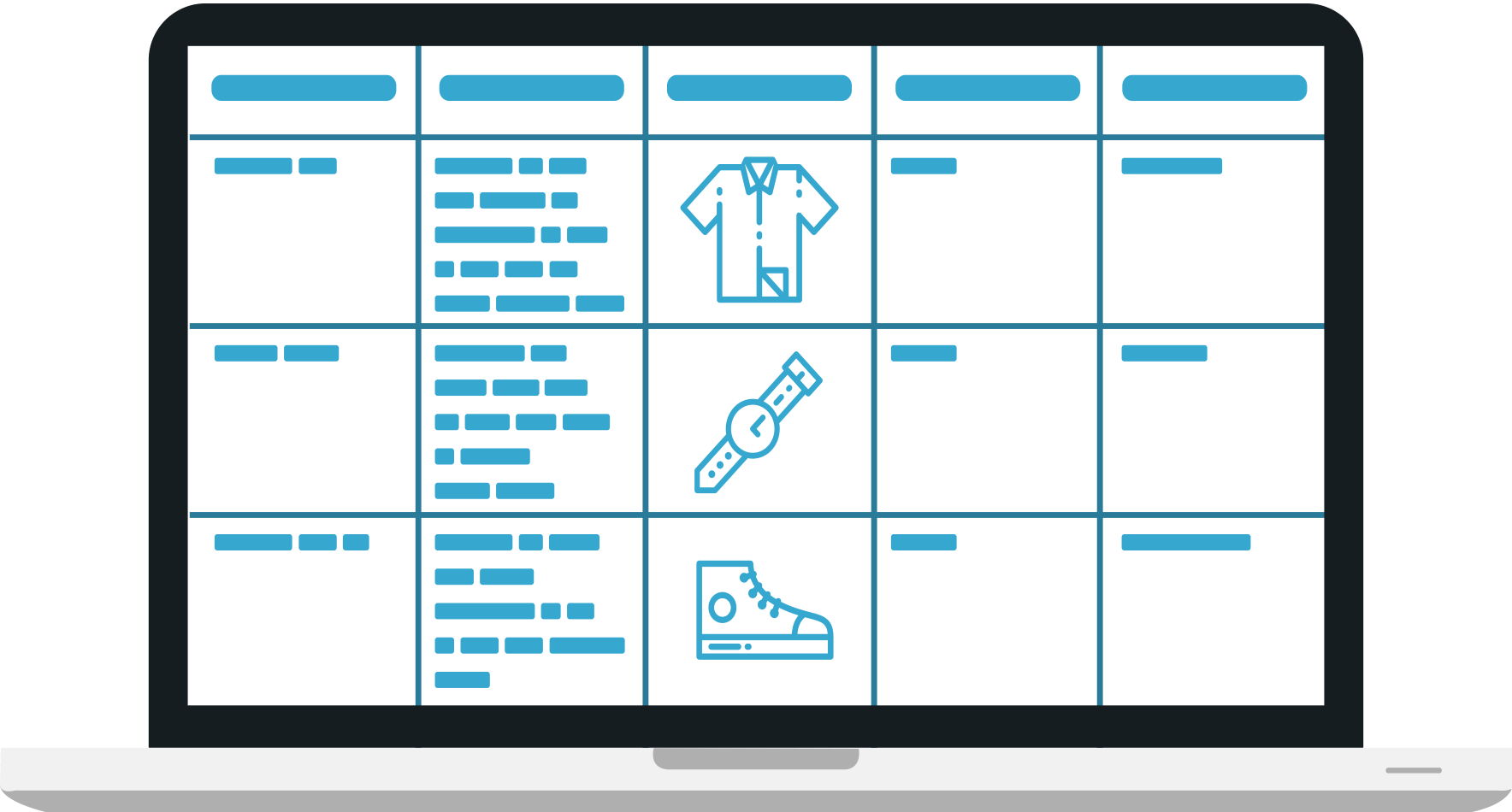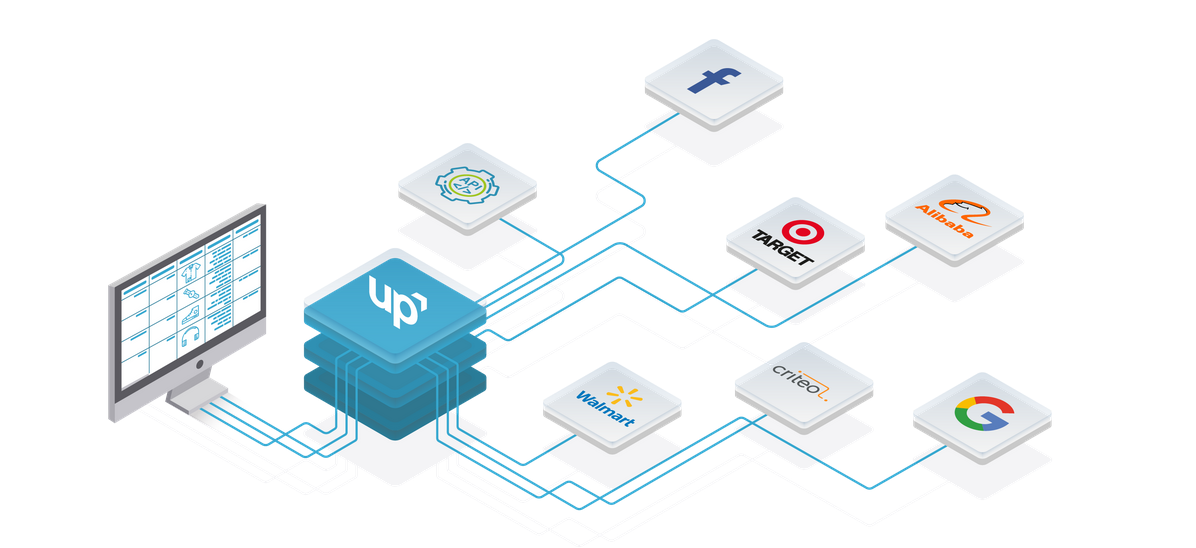Enterprise business has an enterprise-level need to always reach more customers and compile more product data at faster speeds. They want to reach new channels, from retailers to POS to datapools and marketplaces. They want to onboard vendor data from all kinds of different platforms. In short, they need a well-oiled, high-tech machine to manage product information.
However, many modern enterprises still use outdated, highly inefficient methods for aggregating, optimizing, and syndicating product data. This could be due to the complexities of business processes, problematic legacy systems, or simply a poor understanding of what solutions are available.
Take a closer look at the way you manage product data, from beginning to end
| __Poor data management and practices can cause several problems:__ | |
| Unnecessary time and resources required to aggregate from multiple suppliers | IT regularly required to spend hours preparing data |
| Hectic or imperfect product data and processes | Chargebacks or loss of sales from improper data standards |
| __Who this affects__: Retailers, affiliates, wholesalers, distributors, brands, manufacturers | |
Most large businesses will use a PIM or some kind of “single source of the truth” for their product data. This solves the ‘data management’ problem, but it doesn’t begin to address the challenges of syndication or aggregation.
In fact, manual data entry and editing is still very common--even among international, Fortune 500 businesses. IT teams, interns, or even external freelancers are used to regularly update thousands or millions of SKUs. This is not a good use of an employee’s time, and it is often one of the least fulfilling jobs to be delegated.
However, modern approaches can remove these manual and legacy methods by leveraging end-to-end product data aggregation and syndication tools like Productsup.
Productsup acts as the product content network of the commerce system, offering a complete end-to-end solution designed to help enterprise brands, manufacturers, retailers, wholesalers, distributors, and affiliates increase returns.
Leverage real-time analytics to ensure your data is clean and channel-ready, and let our AI assist you with category mapping, extract data from product images, and generate text dynamically.
Bring value to your entire business, even the marketing department, in the short and long term.
How does end-to-end product data management work?
There are three key steps for enterprise when it comes to their product data:
- Aggregation
- Optimization
- And syndication
Some businesses will need only the aggregation use case while others may use only syndication. However, when a large enterprise needs to keep all their data in one place, they’ll need a complete, one-stop-shop solution.
Example: A company who sells both their own in-house brand as well as products from other companies is a clear, powerful example of end-to-end data flow.
- Here, the company must first aggregate all kinds of external data from their retailers.
- Then, they must standardize, or optimize, that product data so it’s all in the same, perfectly optimized format.
- Finally, they must syndicate their in-house product data or product catalog to an export channel like Amazon or a smaller, niche business such as regional wholesale.
Lets take a closer look at this process.
1. Aggregate from all kinds of upstream data sources
Who is most affected: Retailers, aggregators, affiliates, wholesalers, distributors
Do you: aggregate product data either from external partners and businesses or from multiple places within your own enterprise?

An aggregator will need to compile data from several different sources such as retailers or manufacturers. However, this data will always come in varied formats. Data pulled from Retailer #304’s PIM will look drastically different than data from Retailer #487’s manual records. An employee must manually manage this as part of their ongoing tasks, introducing the possibility for human error and taking up time and resources.
This is a huge impediment for businesses who want to move fast and grow market shares.
Major flaws of traditional enterprise-level product data aggregation practices:
- Requires IT
- Manual processes take time and resources
- Resources are required each time data is imported
Aggregation with Productsup means faster results, fewer wasted resources
Productsup allows you to pull data from almost anywhere and aggregate it in one place with next to no manual work required. Just set up the processes once and let them run.
Productsup lets you:
- Keep data up-to-date with minimal work
- Keep data clean by removing manual work and possibility for human error
- Reduce resource and time usage, particularly in terms of IT
- Import from any PIM, MDM, PCM, ERP or legacy back end system
- Leverage your PIM to create both a Golden Record and easily modified agile record
Note: If you already work with SAP Hybris, there’s an easy integration for Productsup available now.
2. Localize and prepare data at scale (without the help of the IT department)
Who is most affected: Manufacturers, brands
Do you: send data to different channels with different requirements or need to standardize and edit product data in bulk?

You have aggregated your data in one place. That could be products from external retailers or wholesalers; it could be your own internal products that are ready to advertise or ship.
Next, you’ll want to send that data to the desired export channel, like Walmart, Amazon, or Google. But first, you’ll need to edit and standardize the product data. This could include easy changes like removing errors. It could include more difficult tasks like completely changing product images or complying with dramatically different template requirements.
Example: An aggregator may need to turn data from 500 retailers into fully branded, stylized content. Or, syndicators may need to clean and prepare 5,000 SKUs for export to their desired retail channels.
Data optimization is the most dynamic step of the product data flow. Healthy, smart processes gives you an incredible time-to-market. It optimizes sales, increases ROI, and more. However, subpar processes turn this step into an uphill battle. Again, employees who must make manual changes or use platforms that require coding will spend hours each week simply trying to keep product data functional.
Common optimization problems:
- Localizing for different languages or currencies
- Standardizing thousands of SKUs on a regular basis
- Removing errors like html encoding or improper capitalization
- Adapting to unique channel offerings available in certain locations
Optimize with Productsup to meet short and long-term goals
Productsup offers an incredible breadth of optimization tools for data managers as well as marketers. You can use our rules and features to turn raw data into an acceptable feed in an instant. The Productsup platform lets you:
- Apply changes to your data in bulk, quickly using rules
- Adapt to numerous channels with a few clicks
- Make changes without requiring IT’s help; no coding required
- Easily manage thousands upon thousands of SKUs
- Separate and manage product catalogs with ease
3. Syndicate to your retail, affiliate, and other favorite channels
Who is most affected: Manufacturers, brands
Do you: send data to multiple retail sites, marketplaces, or other channels?

No matter where you export products—whether it’s Walmart, Amazon Vendor Central, or Wayfair—you’ll need to follow the channel’s unique requirements. For vendors and suppliers, it takes time to perfect the way a retailer expects barcodes, pallets, or anything else to be delivered to them. The same is true of your data.
Even small mistakes with your product data, such as how the price is displayed or the type of image used, could lead to fees or products being disapproved. Physically supplying products still requires an amount of human intervention. However, there’s no reason to use manual labor when supplying data.
Common problems associated with product data syndication:
- Keeping track of regularly changing export channel requirements
- Reliably, automatically uploading product data feeds
- Reaching new markets fast
- Avoiding fines or lost sales incurred from errors
Automated product data syndication at export is more complex than simply sending data to a website. It requires understanding and meeting the requirements of each channel. With channels changing requirements regularly, you’ll need a tool that keeps up with changes and makes it easy to edit in bulk.
Exporting with Productsup, the one-stop, all-your-favorite-channels tool
Productsup makes it easy to prepare your data for export, including baked-in best practices through our channel templates. This takes the pressure off marketing and IT teams. Let us do the heavy lifting.
Productsup offers:
- Fully automated syndication to every channel, reseller, and marketplace
- Existing export templates for 1,500+ channels with more being added as needed
- The ability to export thousands upon thousands of SKUs quickly and easily
- Real-time analytics to ensure the most effective channel efficiency possible
Get started with end-to-end product data management
Optimizing the product data flow at enterprise-level requires much more than a basic tool. A powerful, end-to-end platform like Productsup allows non-IT teams to easily manage huge amounts of data with ease and agility. It offers simple tooling to automate processes right now as well as options to optimize your product data for years to come.
To learn more about the future of your product data management, book a free demo. Let us show you how easily you can turn a time-consuming, resource-devouring task into set-it-and-forget-it.

![[WP Import] What is end-to-end product data flow for enterprise?](http://images.ctfassets.net/q17uls4wkkdz/2FAOezlPuFWIyuVgpsNMvN/18e49c15fdfa2f6aaf269d1e11516e4d/upstream_downstream_800x500.jpg?w=1200&h=675&fit=FILL)